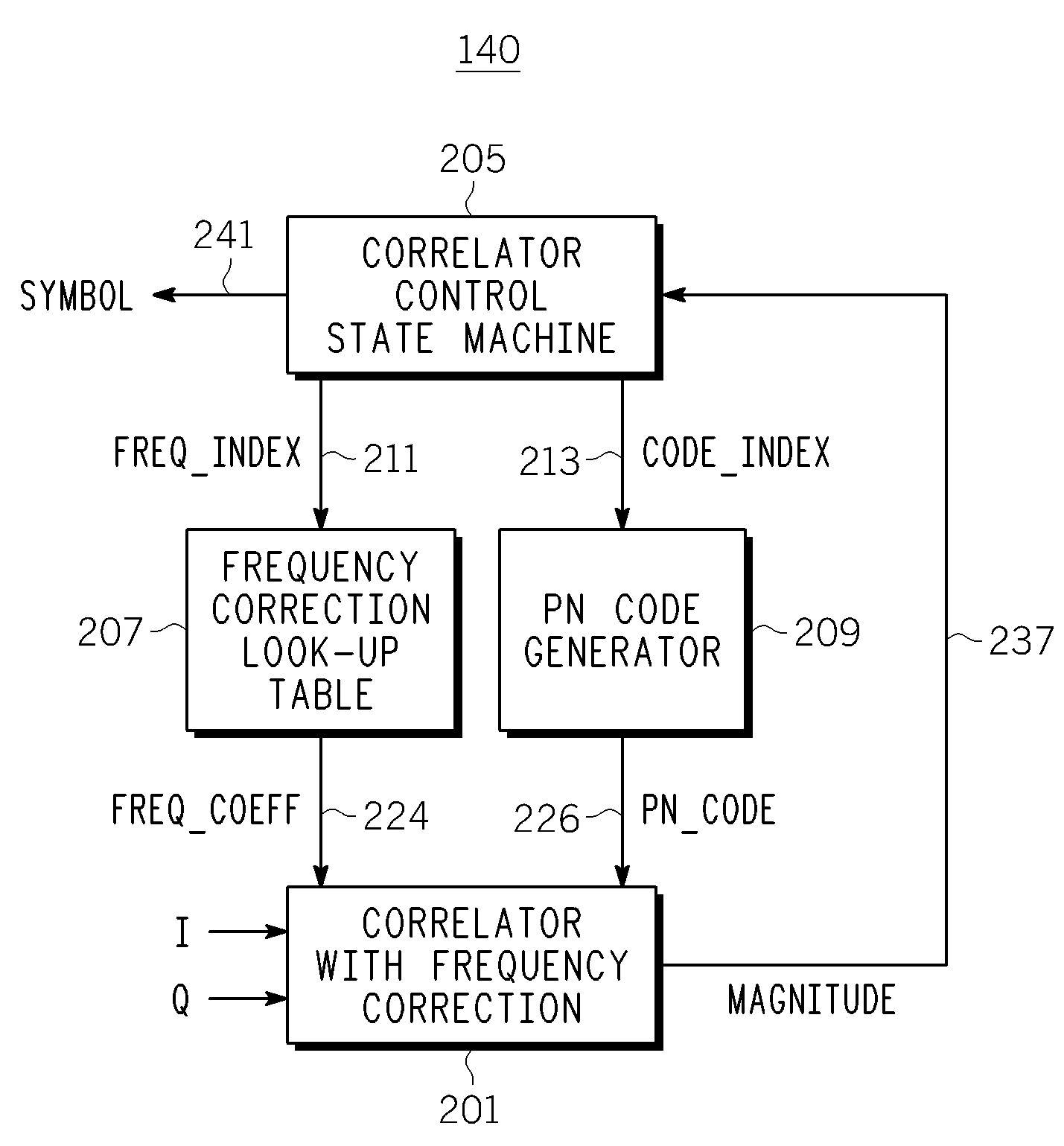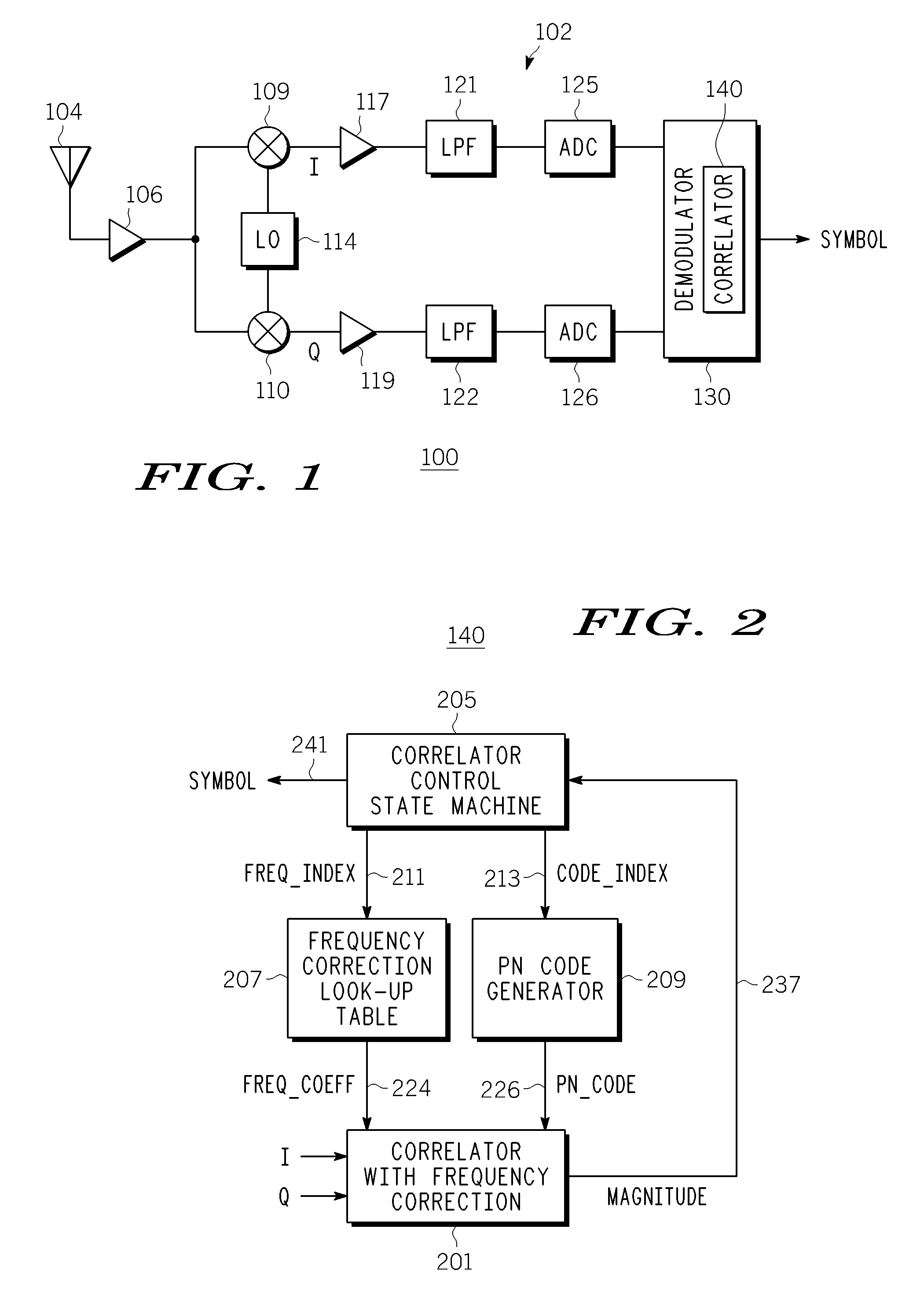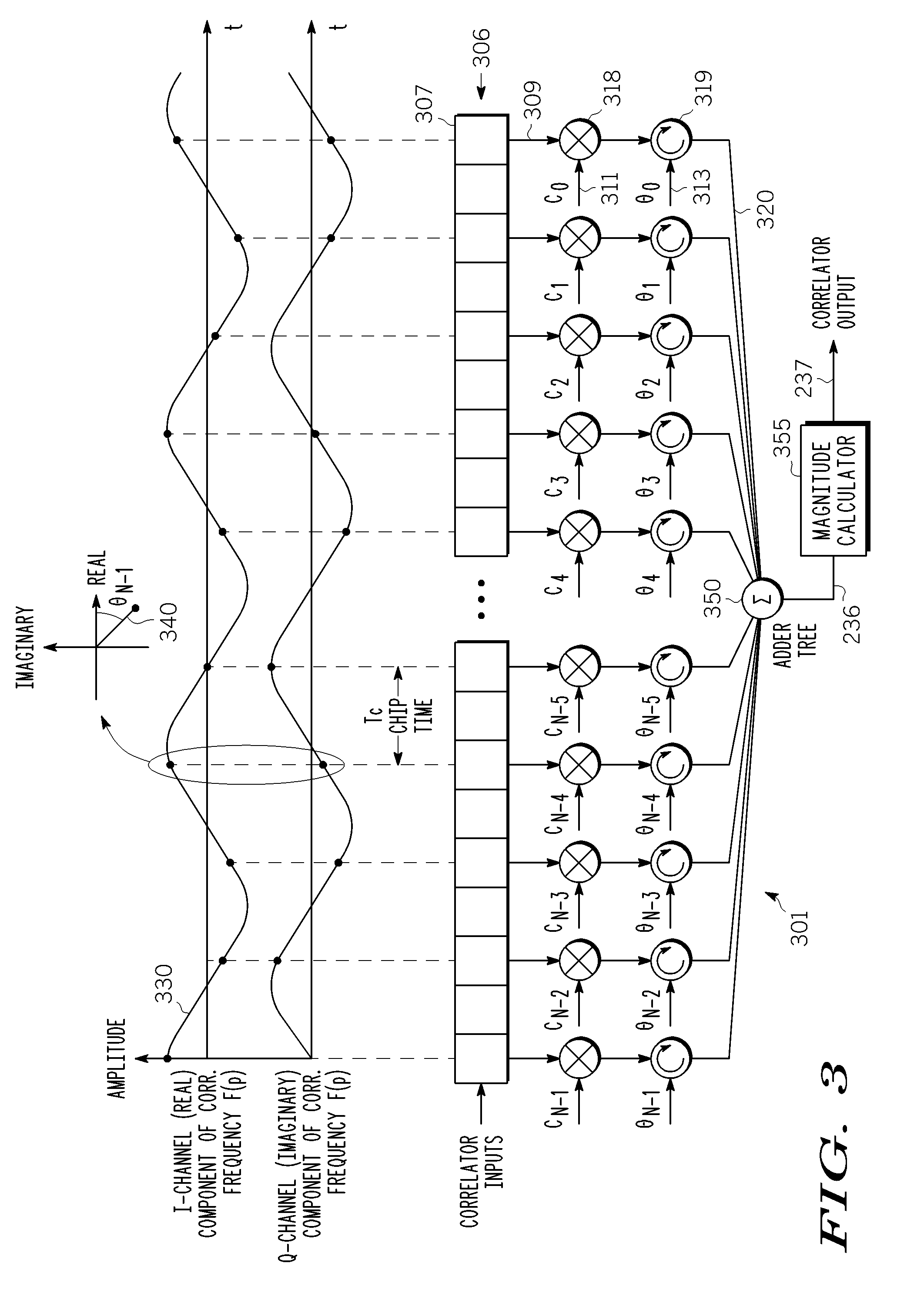Joint de-spreading and frequency correction using a correlator
a correlator and receiver technology, applied in the field of radio frequency receivers, can solve the problems of loss in the magnitude of the output of the correlator, the difficulty of frequency error estimation, and the difficulty of de-spreading the correlator that is used in the dsss receiver
- Summary
- Abstract
- Description
- Claims
- Application Information
AI Technical Summary
Benefits of technology
Problems solved by technology
Method used
Image
Examples
Embodiment Construction
[0029]FIG. 1 is a simplified functional block diagram of a portion of a transceiver 100, including a portion of a baseband receiver 102. The receiver 102 includes an antenna 104 for receiving a digitally-modulated signal, including, in particular, any coded-modulation signal such as a direct sequence spread spectrum (DSSS) signal. In an exemplary embodiment, the receiver 102 down-converts a 2.44 GHz RF signal. The received signal is amplified by a low noise amplifier 106. A mixer 109 and 110 and a local oscillator 114 split the received signal into quadrature components, I and Q. Each quadrature component is further amplified by an amplifier 117 and 119, and filtered by a lowpass filter 121 and 122 before it is digitized by an analog-to-digital converter 125 and 126. The digital samples are then inputted to a demodulator 130. The demodulator 130 comprises correlator controller, a synchronization detection unit, symbol detection logic and a complex correlator 140 (hereinafter “correl...
PUM
 Login to View More
Login to View More Abstract
Description
Claims
Application Information
 Login to View More
Login to View More - R&D
- Intellectual Property
- Life Sciences
- Materials
- Tech Scout
- Unparalleled Data Quality
- Higher Quality Content
- 60% Fewer Hallucinations
Browse by: Latest US Patents, China's latest patents, Technical Efficacy Thesaurus, Application Domain, Technology Topic, Popular Technical Reports.
© 2025 PatSnap. All rights reserved.Legal|Privacy policy|Modern Slavery Act Transparency Statement|Sitemap|About US| Contact US: help@patsnap.com



